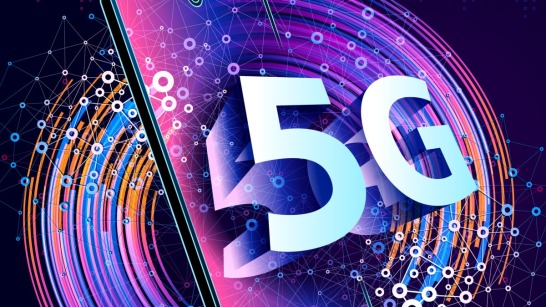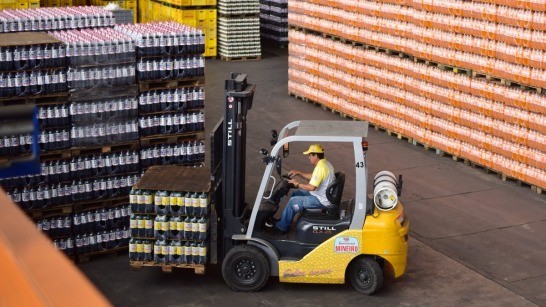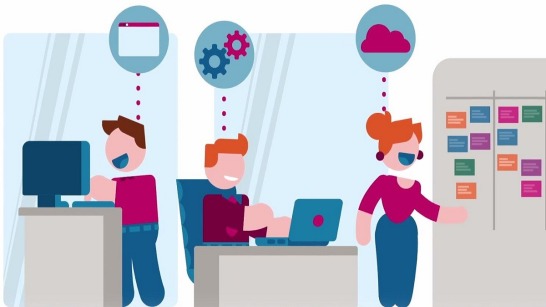When looking at current communication standards, what are the concrete benefits offered by 5G?
Bergmann: 5G is not alone, of course. Wi-Fi, or wireless, is also being further developed. Yet wireless is based on other technologies which have limitations, such as limited bandwidths. The benefit of 5G is its planned, much broader frequency spectrum. Radio subscribers can also switch to other frequencies if necessary, which is not possible with the other standards to the same extent, and they have not been designed for low latency and ultra-reliability. Wi-Fi will, in any case, retain its ‘raison d'être’ because existing radio standards are sufficient for classic applications, such as fleet management, but no longer for all the needs of today’s digitisation. In addition, many companies have extensive existing installations that cannot be replaced overnight. Other standards such as Bluetooth Low Energy are also highly attractive, but remain locally limited. In any case, we will see a coexistence of the systems because it always depends on the application. 5G will be a big add-on, but it won't cover all detailed applications.
What are some concrete benefits and applications for 5G in intralogistics?
Bergmann: What I find particularly interesting are 5G’s performance and reliability aspects. This is relevant in terms of indoor logistics for the control of driverless transport systems. It enables the user to coordinate entire AGV fleets in a confined space and to manage the control and route data in a company’s Edge Cloud. Other possible applications include robotics, collaboration between machines and humans as well as imaging techniques. 5G takes greater account of security aspects and ensures stable connections. There are also interesting approaches for intralogistics when it comes to monitoring because significantly more individual elements can be networked. Today, this is only possible to a limited extent with available standards such as 4G or WLAN.
For industry, “Enterprise 5G" will be very interesting since the communicative isolation from the public network can be safely guaranteed. When it comes to sensitive applications, which previously were only possible in a public network, this naturally offers entirely new application areas. However, this will require free frequencies, whose final structure is still under discussion. Another interesting aspect of 5G for intralogistics is the topic of low power. Looking at assets in intralogistics, such as batteries or attachments, 5G enables allows for highly energy efficient communication. In some cases, energy consumption is only a one-tenth of 4G, an advantage that is particularly important for mobile systems.
In your opinion, will 5G lead to new products and services for the intralogistics industry?
Bergmann: I can answer that with a clear "yes". However, this is not only due to 5G, but primarily from an Industry 4.0 notion as well as the desire to process data differently and to make systems more extensively autonomously available. And 5G supports it. Machine interfaces are then fueled by 5G. The leap from the classic system we currently are familiar with to the fully automated one will not require any intermediate stages, but can be carried out directly. Industry 4.0 is predominantly about data technology processes, and they are supported by 5G. Products involving automation, process transparency, pay-per-use, predictive maintenance or consulting are going to be more strongly supported by 5G. In intralogistics, to provide a couple of examples, mobile robots for picking, a more comprehensive route calculation or an augmented workforce are possible; and you can thank a better data connection for these possibilities.
What expectations do you have of the implementation following the 5G auction of licenses by the German authorities?
Bergmann: I hope to see a clear statement on the deployment of 5G in the enterprise space and the creation of a standard that will also unify the way vendors and customers communicate within the industry. 5G provides us with a fixed platform, which, in turn, provides users with better planning security. It will be easier for intralogistics providers to develop suitable products and solutions because the work environment will be more reliable.
The provision of the necessary infrastructure is of course a prerequisite for this. The ball is in the court of the communication providers for this to happen.
What is the KION Group doing to get ready?
Bergmann: We are in the process of having intensive dialogues with industry partners to identify our customers’ requirements. We are also participating in various committees and research projects to obtain first-hand information about the latest technology options. Using a targeted preparation approach, including testing partial solutions and having intensive discussions, we are aiming to focus on the right aspects and then support them with the appropriate solutions.



